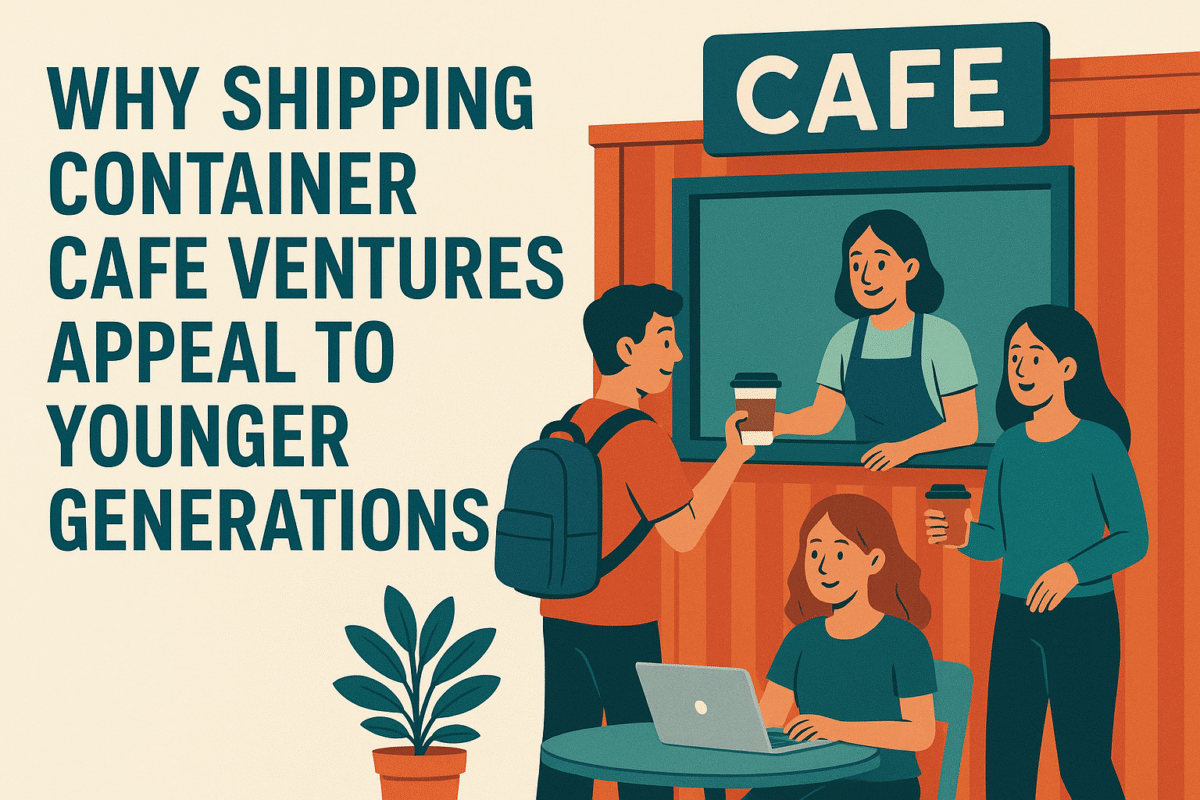In recent years, the hospitality industry has shifted in ways that reflect changing lifestyles, consumer values, and design innovations. Among the most eye-catching ideas is the Shipping Container Cafe, a modern concept that combines functionality with creativity. These spaces, often made from recycled materials, align perfectly with the expectations of younger generations such as millennials and Gen Z, who are redefining how and where they socialize.
Unlike traditional cafes, these repurposed spaces capture attention not just for what they serve but also for how they are built. The compact design, environmental benefits, and urban adaptability of container-based cafes make them highly appealing to younger audiences. Let’s explore the reasons behind this growing fascination.
1. Sustainability at the Core
Younger generations are deeply concerned with environmental issues, often choosing businesses that demonstrate eco-friendly practices. By transforming shipping containers into stylish cafes, entrepreneurs reduce construction waste while reusing durable materials. This sustainable design reduces reliance on fresh resources, creating a smaller ecological footprint.
Such practices resonate with the younger demographic, who view their consumer choices as part of broader climate action. They see these cafes as more than places for coffee—they represent a statement of responsibility.
2. Aesthetic Value and Social Media Culture
The industrial yet artistic design of container cafes fits seamlessly into the visual culture of social media. For younger audiences, aesthetics play a significant role in where they spend time. Vibrant murals, compact seating, rooftop lounges, and minimalistic interiors create Instagram-worthy backdrops.
By visiting, taking photos, and sharing them online, younger patrons help amplify the cafe’s visibility. The uniqueness of the design transforms the cafe into both a social space and a lifestyle expression.
3. Accessibility for Young Entrepreneurs
Many millennials and Gen Z individuals are not only customers but also aspiring entrepreneurs. Traditional real estate investments can be costly, but container-based cafes offer an affordable entry point into the hospitality sector.
These ventures require lower initial investment, shorter construction timelines, and provide opportunities for creative experimentation. For younger entrepreneurs who value flexibility, this business model aligns with their appetite for innovation and calculated risk-taking.
4. Urban Lifestyle Compatibility
City living often means limited space and high real estate costs. Compact yet functional, container cafes can be set up in urban corners, rooftops, or shared public spaces. Their versatility allows them to integrate seamlessly into city life while still offering comfort and community.
For younger generations who thrive in fast-paced environments, the efficiency of these cafes mirrors their own lifestyle preferences. Quick service, accessibility, and convenience make the experience attractive without sacrificing quality.
5. Spaces That Adapt to Work and Play
Remote work, freelancing, and flexible schedules have reshaped how younger professionals use public spaces. Container cafes often provide seating areas suitable for both leisure and productivity. With Wi-Fi availability and relaxed atmospheres, they double as informal coworking spots.
This multipurpose appeal makes them more than just cafes; they become hubs for creativity, collaboration, and connection. For younger customers, spaces that serve multiple purposes feel more valuable and engaging.
6. Pop-Up and Mobile Culture
The concept of mobility appeals strongly to Gen Z and millennials. Container cafes are not fixed; they can be relocated, downsized, or expanded to match demand. This makes them ideal for festivals, beachfronts, art fairs, or community gatherings.
The temporary nature of such setups excites younger patrons who value novelty and fresh experiences. They are more likely to return to venues that continually evolve rather than remain static.
7. Affordable Luxury
Price plays an important role for younger consumers who often balance lifestyle aspirations with limited budgets. Container cafes typically require lower overhead costs, enabling them to offer competitive pricing without compromising on style or quality.
This balance creates the sense of “affordable luxury.” Customers enjoy premium design and memorable experiences at prices accessible to everyday budgets. This combination ensures long-term appeal among youth.
8. Community and Inclusivity
Beyond serving food and drinks, container cafes often function as community spaces. Hosting local music, art exhibitions, or cultural events makes them gathering points for like-minded people. Their design naturally promotes openness and interaction, aligning with younger audiences’ desire for inclusive, community-driven environments.
These events create deeper emotional connections, transforming casual visitors into loyal customers.
9. Future-Ready and Innovative
The adaptability of container structures allows them to integrate renewable energy systems, smart lighting, or even solar power. This forward-thinking appeal excites younger audiences who value innovation.
In regions exploring Container Conversion UAE, these modern solutions are increasingly relevant. Younger generations, always seeking futuristic experiences, recognize container cafes as a glimpse into how sustainable design and hospitality can merge seamlessly.
Conclusion
The rise of the Shipping Container Cafe is more than a passing trend; it reflects the evolving values and lifestyles of younger generations. By combining sustainability, affordability, flexibility, and aesthetic appeal, these cafes resonate deeply with both young consumers and entrepreneurs.
In cities around the world, and in regions experimenting with Container Conversion UAE, these spaces are redefining the way people view coffee shops and social hubs. For millennials and Gen Z, container cafes are more than places to sip a latte; they represent innovation, identity, and community.
As the hospitality sector continues to evolve, the influence of younger generations ensures that container cafes will remain not only relevant but also central to the future of dining and social interaction.

